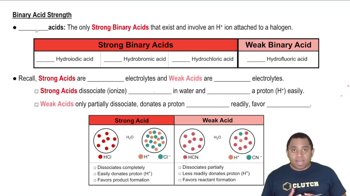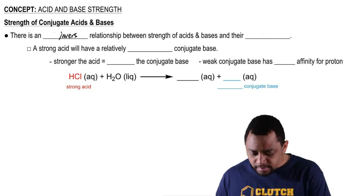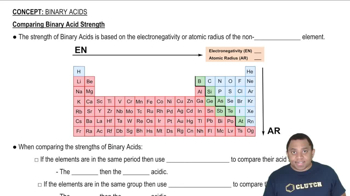Here are the essential concepts you must grasp in order to answer the question correctly.
Acid Strength
Acid strength refers to the ability of an acid to donate protons (H⁺ ions) in a solution. Stronger acids dissociate more completely in water, resulting in a higher concentration of H⁺ ions. The strength of an acid can be influenced by factors such as the stability of the conjugate base formed after deprotonation and the electronegativity of the atoms involved.
Recommended video:
Conjugate Base Stability
The stability of a conjugate base is crucial in determining the strength of its corresponding acid. A more stable conjugate base will favor the dissociation of the acid, making it stronger. Factors affecting stability include resonance, electronegativity, and the size of the atom bearing the negative charge. For example, if a conjugate base can delocalize its negative charge through resonance, it will be more stable.
Recommended video:
Strength of Conjugate Acids and Bases
Comparative Acid-Base Properties
When comparing acids, it is essential to consider their molecular structure and the elements involved. For instance, acids containing central atoms from different groups in the periodic table may exhibit varying strengths due to differences in electronegativity and atomic size. Additionally, the presence of electron-withdrawing or electron-donating groups can significantly influence the acid's ability to donate protons.
Recommended video:
Comparing Binary Acid Strength
 Verified step by step guidance
Verified step by step guidance

